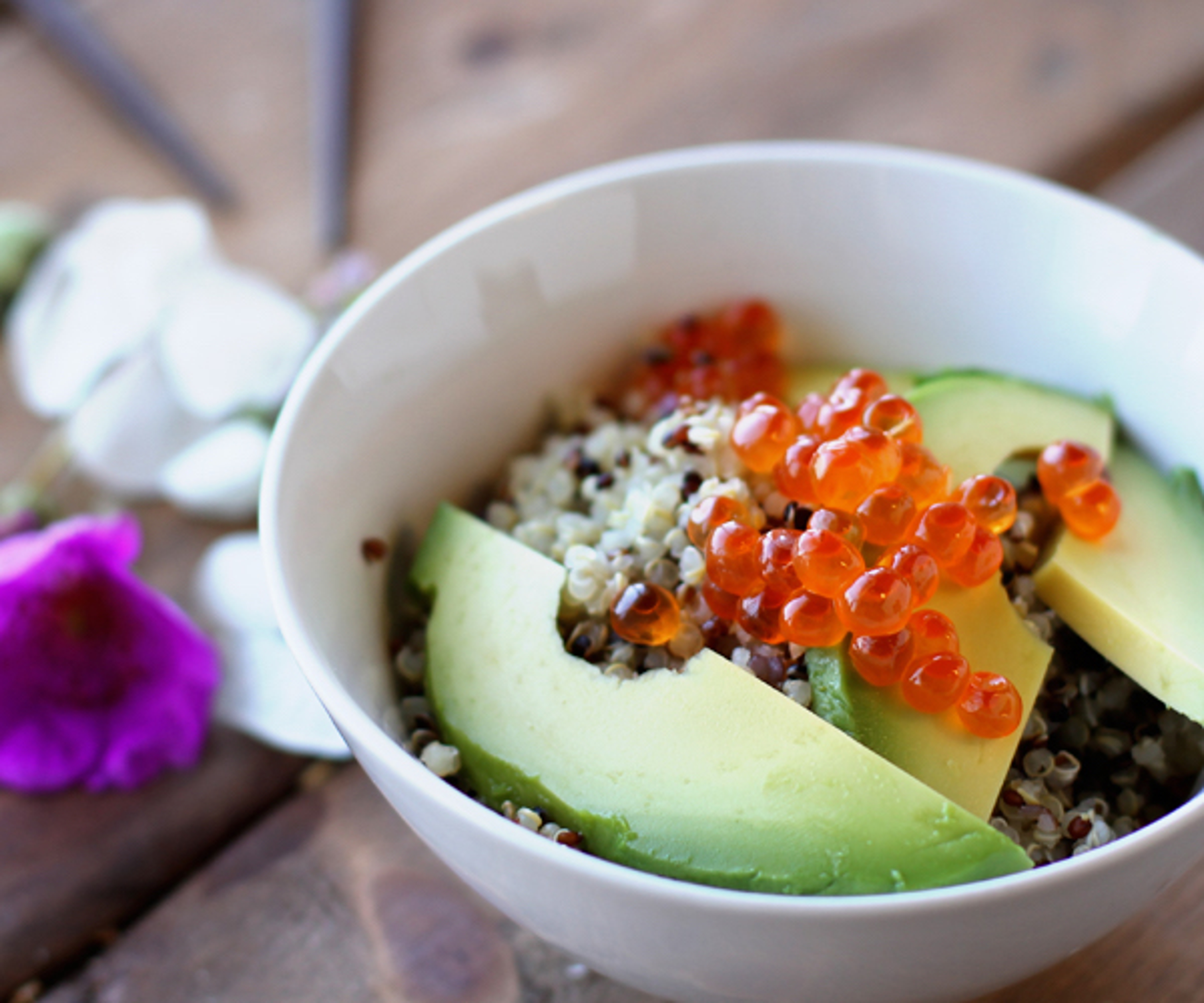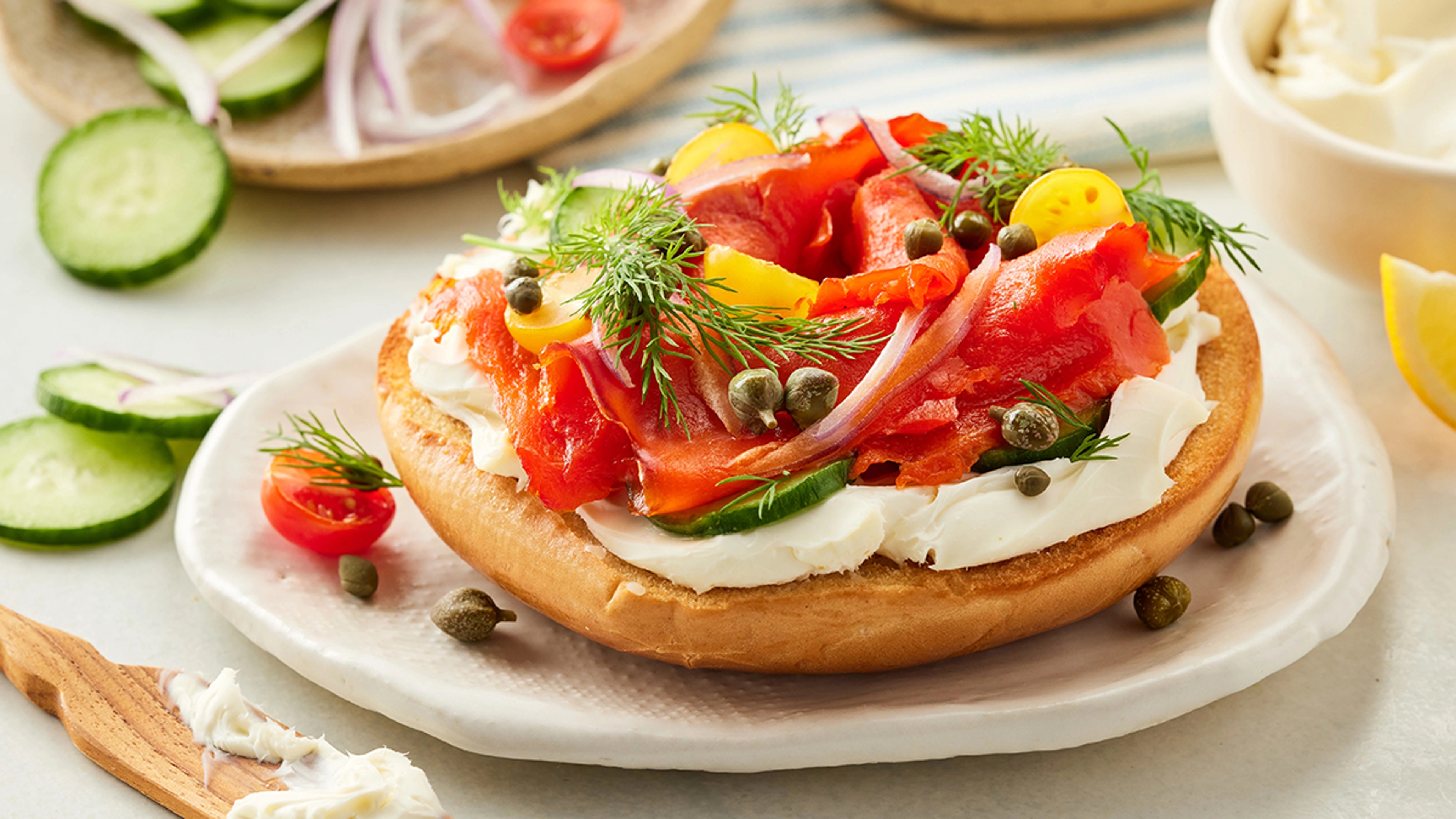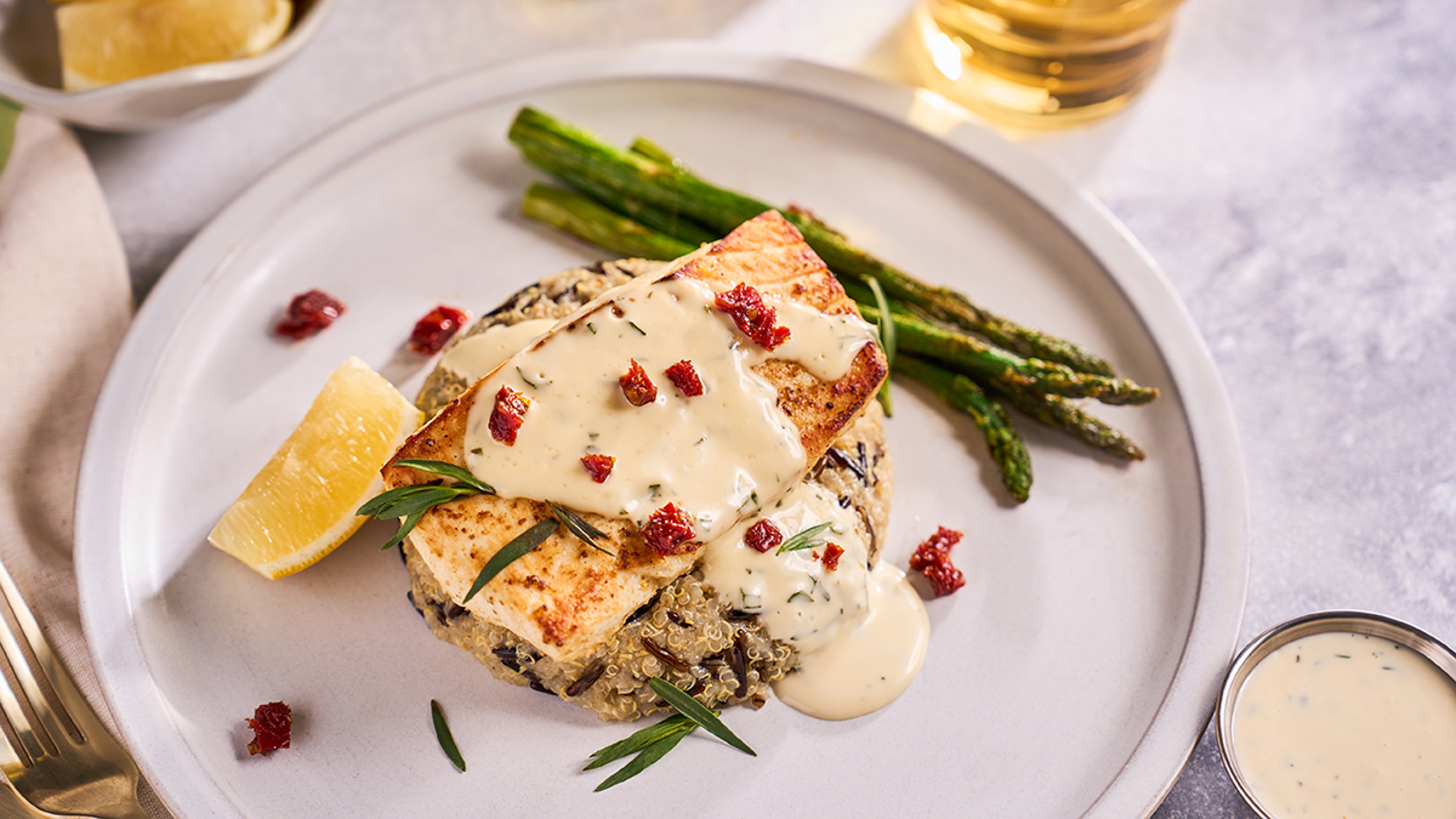Roe and Behold! Ikura Recipes for Breakfast, Lunch, and Dinner
Salmon eggs have long been prized in both Russia and Japan. Now you can prize them in your own home.
Dec 12, 2024
You've seen those glistening red globes wrapped in seaweed on a sushi platter. Lovely! But what exactly are they and where do they come from?
Answer: They are unfertilized eggs harvested from salmon, a rich and much-prized delicacy, and an excellent source of calcium, vitamin A, iron, and omega-3 fatty acids.
The Japanese call them ikura when they are freed from a connecting membrane and are separated into individual eggs. The word comes from the Russian ikra, meaning fish eggs. When left in a cluster within the membrane, they are called sujiko.
Salmon roe can be frozen, crushed, mixed into pastes and spreads, even dried. But it's most delicious at its simplest, whole and brined — using quality salmon, such as wild Alaskan keta, sockeye, and pink salmon.
Keta roe tends to be the most popular, offering the signature "pop" in the mouth preferred by ikura aficionados.
Ikura, and fish roe in general, offers unique, potent flavor that's sharply salty, savory, and rich. There are many ways to weave this taste of the sea into your meals throughout the day.
Elegant ikura, sushi-style
Most Americans encounter red or reddish fish eggs first in a sushi restaurant, but it is not necessarily ikura. You'll often see much smaller orange-red globes used as a topping for sushi — they could be tobiko (flying fish roe) or masago capelin fish eggs that have been dyed orange.
You'll recognize actual ikura because of its larger size and redder hue, and sometimes you'll see thin slices of cucumber served with it. Why is that? Prepare to learn some classic sushi etiquette.
Sushi chefs typically push slices of raw fish down into their rice bed. That makes it easy to pick up the combination, quickly turn it fish-side down, and dip it into your soy sauce before popping it into your mouth. Ikura isn't pressed, though, because that would crush the eggs. Now there's a problem — if you turn the package upside down, the eggs will fall off.
To make it easier (and less messy), chefs may top the eggs with the cucumber, which you can pluck out with your chopsticks, dip into the soy sauce separately, and then place back on your ikura, now seasoned.
READ MORE: The Origin of Sushi: It's History Will Surprise You
Ravishing ikura, Russian style
The Russians eat their fish eggs red (the types we've mentioned here) as well as black (that traditional caviar comes from sturgeon). Indeed, it's so much a part of Russian life that ordinary grocery stores sell salmon roe in cans.
Connoisseurs know that salmon spawn from July to September, so they seek roe caught and packaged during that time and not much later. In the Soviet period, tins of red eggs were offered as gifts from the state during national holidays.
As a treat, Russian children might be fed sandwiches of salmon roe on a slice of warm white bread.
READ MORE: So, What's All the Fuss About Caviar
Ikura recipes for breakfast

For a Russian breakfast, try topping pancakes, also known as blini, with a spoonful of salmon roe adorned with sour cream or crème fraîche.
In the Jewish version, you'll top your latkes with sour cream and roe.
Or consider salmon roe a better way to "salt" scrambled eggs. Whip the eggs till they're fluffy, then add to a buttered pan on medium heat, continuing to whisk. When the eggs are halfway set, add your roe and stir briefly, then turn off the heat and let the heat of the pan continue to cook the eggs for a few more seconds.
Ikura recipes for lunch
You can update the simple Russian sandwich using French baguettes and fine sweet butter. Put cream cheese and roe on a whole-grain rye bread for even more protein and nutrition.
Or go modern, and add roe to your avocado toast.
Ikura recipes for parties
Dress up cucumber salad! Combine full-fat sour cream with a little milk, lemon zest, and black pepper. Add ikura and finely diced, seeded cucumber and red onions to taste. Your guests will need bowls.
Deviled eggs are a decadent, surprisingly easy, and super-popular appetizer or hors d'oeuvre. You'll hard-boil your eggs, peel the shell off and divide them in half, and scoop the yolks into a bowl. Mash the yolks with mayonnaise, Dijon mustard, and roasted garlic until the mixture is smooth and creamy. After you fill up the whites with this delicious mixture, top with salmon roe and fresh chives.
More simply, arrange a plate of lox or gravlax (which is cured with sugar and less salty) with bowls of crème fraîche, ikura, and fresh dill that your guests can combine themselves, perhaps on toast points or crackers.
Do you like burrata, the semisoft Italian cheese? In a Japanese twist on a burrata crostini, try putting the cheese on toasted baguette slices and topping it with ikura. If you like spice, add yuzu kosho, a citrus chili paste that's available online.
Ikura recipes for dinner
Surprise your family with creamy avocado pasta.
Consider soba noodles for a twist (though if you're serving a gluten-free eater, be aware that many brands combine buckwheat with wheat flour). The sauce couldn't be simpler: Mash ripe avocados with lemon juice, cream, mayonnaise, and soy sauce. When you're close to serving time, mix the sauce with the pasta and serve topped with ikura and toasted nori or sesame seeds for crunch.
Or try an elegant Japanese salmon meal suitable for guests. In this ikura recipe, you bake salmon fillets for under 15 minutes after basting the fleshy side with a mixture of miso paste, sake, and mirin (a sweetish rice wine). Separately, cook lots of oyster mushrooms and mix them with cooked white rice seasoned with butter and soy sauce. You'll serve the mushroom rice in individual bowls, top each with salmon, and garnish with a generous portion of ikura plus scallions and toasted nori.
There's always a way to use your ikura and add a little "pop" to your day.
Vital Choice was a 2022 winner of the Good Food Awards for its wild Alaskan sockeye salmon ikura. The award recognizes foods that are "tasty, authentic and responsibly produced" and honors brands that push their industries toward craftsmanship and sustainability.











